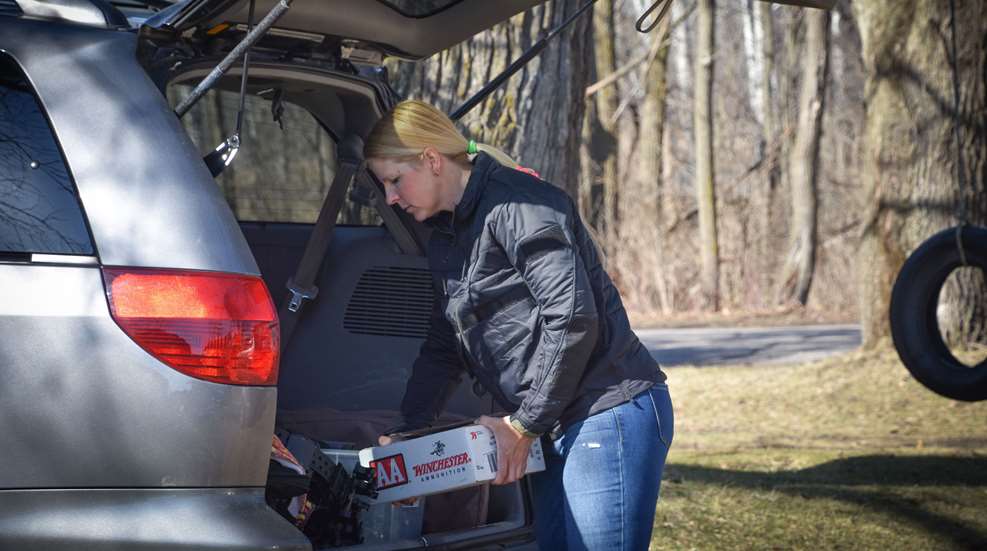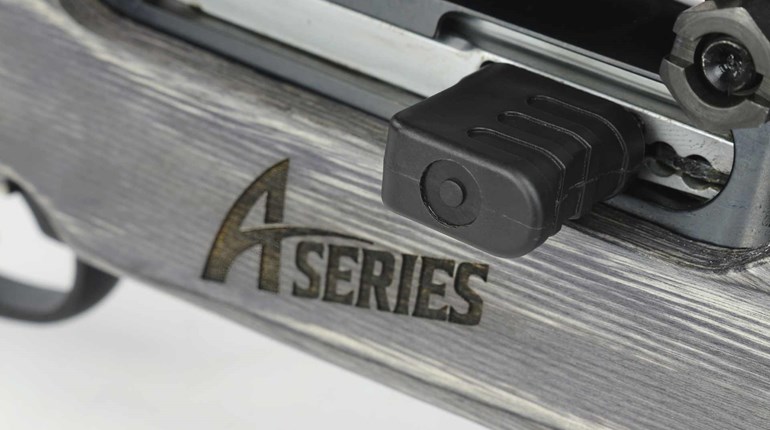
My family travels several times a month with firearms. We travel by car and plane and usually stay at hotels in the process. I want to share some of my strategies for navigating the open road with a firearm for those new to the practice.
Establish Safe Habits and Patterns
Travelling with firearms means that you might need to adjust some of your behaviors. You need to understand and obey the laws from state-to-state regarding concealed carry and how firearms must be stored while being transported in your vehicle. It’s a good idea to establish habits that serve as reminders that your firearms are with you in order to ensure that they are safe while on your trip.

Step 1: Check Concealed-Carry Reciprocity
You should know before you travel what states on your route reciprocate your concealed-carry rights and recognize your license, based on your home state and valid concealed-carry permit. You can find the information in resources like resources like the The Firearms Laws of the Fifty States or check for this information on NRA ILA’s website. Select your state, and the website will bring up the details of which other states reciprocate, the laws on transportation of firearms and break down some of the finer points of firearms laws as they pertain to that state.
Step 2: Make a List
- Check laws on transportation/storage of firearms and ammo. If you are flying, check the airline requirements for packing ammo and firearms. Some airlines permit both to be stored in the same locked, hard-sided container; others require them to be separated.
- Check with the airline whether you are required to notify them ahead of time that you will be traveling with firearms. This is always required on international flights, as is securing permits and a completed U.S. Customs form from your destination country.
- If you will travel to or from of a state known for not being firearm-friendly, research the airport, as you might be surprised. Some of these airports can be easy to navigate with firearms, provided you follow the process. Claim your bag at the baggage claim with a police escort to the ticket counter to re-check in with your connecting airline. You will most likely need to notify your airline of this, so a little legwork can help you understand the process and avoid unpleasant surprises.
- Research the rules of firearm and ammo storage while in your vehicle. Some can be carried on your person; some require them to be “inaccessible” (e.g., in the trunk and/or locked.)

Step 3: Have a Plan
- Make sure all guns are unloaded and in cases.
- Store ammunition out of sight.
- Never leave a concealed-carry firearm in the glovebox or any place you might have to access insurance information for law enforcement.
- Never leave firearms in your car overnight.
- Do not have guns visible during travel. For example, if you were pulled over by a police officer, would they be concerned about what’s in the back of your minivan?
- Park in well-lit areas.
- Do not advertise what is in your car with a lot of gun-related stickers.
- During the trip, try never to let your vehicle containing firearms out of your sight. This might mean choosing stops to eat or use the restroom that are bright, full of people and busy.
- Use Discretion: If you pull up to a hotel and there are people in the unloading area, pull away to a parking spot and organize the contents of your car, cover things up, and arrange them so that you can pull out only what you want people to see. Change the direction you pull up, even if it might be the wrong direction. Another option is to unpack only luggage now and bring gun cases up later.
- Pack an extra jacket/blanket/tarp/beach towel to conceal what is left in your car. Never leave ammo boxes in sight, and consider what you throw into the hotel trash can.
- Conceal gear like eye and ear protection, especially ones with logos that are visibly firearm-related.
I travel with the intent of looking like a mom with a minivan, and don’t plaster my vehicle with firearms related stickers. I keep any gear out of sight or covered. Our shooting belts for example look very tactical, and I never leave them in sight in the car. And my preferred “camouflage” for the contents of my vehicle at night are the water bottles and often the trash bag and clutter, just to give anyone snooping the appearance of “mom van with messy kids.” I also hide any electronics cords and chargers to avoid inviting people looking for electronics to steal.
Step 4: Be Discreet
If you have to leave your guns in a hotel room, lock them in a case. If they don’t fit in a hotel room safe, consider locking the case to a large piece of furniture that can’t be moved. Consider using the staff-managed hotel safe. Some of our foreign travel requires this.
Many people have fierce views on not leaving their guns in their car while they get dinner. If we have to leave firearms in the car during dinner, we always lock our car, take off our jerseys, and park where we or many people can see our vehicle.

If you leave guns in the hotel, consider doing this only in the evening, not in the morning when the cleaning crew is going in and out of rooms, leaving doors open. Depending on the location, you might even leave one person in the hotel room. We are often travelling with thousands of dollars of guns and optics, and so it’s sometimes tough to keep as low a profile as we would like, due to the many cases and all the gear. These are the times we just settle on food that we can have delivered to the room.
For regular concealed-carry travel or just a couple people attending a match, use gun cases and bags that are free from identifying stickers and logos. Stow them on the luggage cart and throw your jacket, clothing bags, travel pillow, blanket, etc. over the top as you navigate check-in and elevators. A few small steps can make your transport into and out of hotels very discrete. It just takes some planning and forethought.
Conclusion
Overall, just think about who you do or do not want to know that you have a firearm, and act accordingly. If you travel with children, counsel them not to talk about it. Making yourself a target can happen because of what people hear as well as what they see. So be sure your travelling companions are on the same page as you, and travel safe!















































